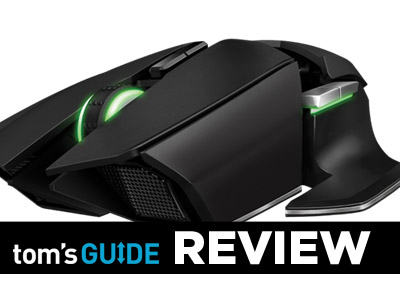Tom's Guide Verdict
The Razer Ouroboros is near the top of the heap when it comes to customizability, but it sacrifices comfort at every turn.
Pros
- +
Incredibly customizable
- +
Suits all grips and play styles
Cons
- -
Profoundly uncomfortable
- -
Flimsy, unsatisfying buttons
- -
Too easy to trigger side buttons accidentally
Why you can trust Tom's Guide
When it comes to gaming mice, you don't always get what you pay for. Case in point: the Razer Ouroboros ($149).
This peripheral is near the top of the heap when it comes to customizability, but sacrifices comfort at every turn. While the Ouroboros offers a conformation and control scheme for every gamer, the vast majority of users would be better off finding a mouse that suits them right out of the box.
Design
The Ouroboros is a case study in why the kitchen-sink approach to mouse design is not necessarily a great idea. At first glance, the mouse looks like an industrial contraption, with sharp angles, jutting buttons and an unsightly gap in the dead center of the palm rest. Flip the mouse over, however, and it reveals a wealth of options.
MORE: Best Gaming Mice
By loosening two tiny screws (screwdriver included), users can adjust the length of the mouse (and the size of the gap between the buttons and the palm rest). They can also change the height of the palm rest, enable or disable the right and left trigger buttons or swap out the textured pads for the thumb, ring finger and pinky with actual thumb/finger rests.
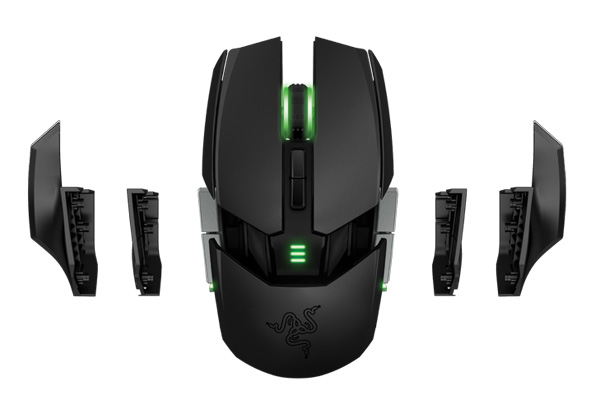
The mouse is completely symmetrical, so both left- and right-handed users can devise custom setups that work for them. The adjustable length of the Ouroboros also means that palm-, claw- and fingertip-grip players are all on equal ground.
These features sound appealing, but they mask a hard truth: The mouse is not comfortable to hold.
No matter how big or small your hand may be, the gap in the palm rest will still leave a good chunk of your appendage unsupported. The thumb rests and textured pads feel decent, but overall the Ouroboros is not nearly as comfortable as a mouse with dedicated rests or pads.
In our testing, the left- and right-mouse buttons felt flimsy and indecisive. It was almost impossible to hit the triggers without accidentally activating the opposite set of side buttons, and the sharp angles everywhere dug into this reviewer’s hand, especially during intense play sessions.
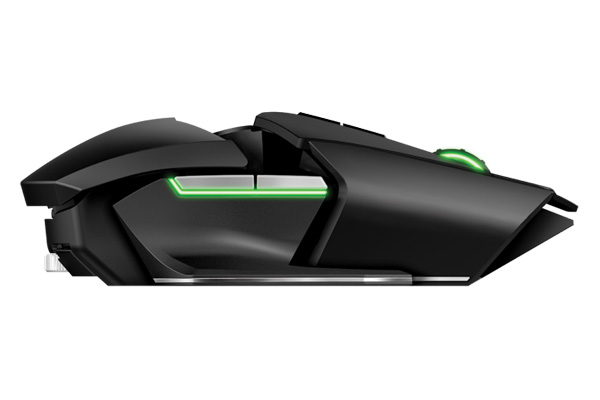
Of course, it's still possible to get acclimated to the Ouroboros. We passed the mouse around the Tom's Guide office to test its comfort, and opinion was split almost down the middle. Those who hated it couldn't wait to go back to using a regular office mouse, while those who liked it admitted that it took some getting used to.
Features
Like all modern Razer mice, the Ouroboros makes use of the company's Synapse software, which lets users program profiles for the mouse, then upload them to the cloud for access from any computer. The mouse itself does not store any profiles.
As befits a mouse of its complexity and price tag, the Ouroboros has a ton of settings with which to tinker. The Ouroboros offers 13 buttons, 12 of which are totally programmable (the left mouse button is not). Users can set up individual profiles that link to specific games, although these profiles do not automatically reset after the game is closed (unless you write a profile specifically for Windows Explorer).
The dots-per-inch (DPI) sensitivity is also fully customizable, with an impressive range of 100 to 8,200 DPI. By default, two buttons just beneath the scroll wheel can alter DPI on the fly, which is useful for games where you might need to scroll at different speeds — firing from the hip or lining up a shot via iron sights in a first-person shooter, for example.
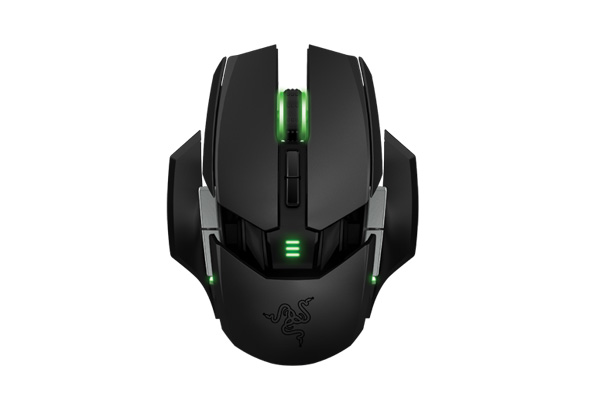
One unusual feature of the Ouroboros is that it functions both as a wireless and a wired mouse. While gamers are inherently distrustful of wireless gaming mice, in our tests, we found no difference between the response rates of the wired and wireless states. Syncing the mouse with its docking port is simple, although the Ouroboros takes longer to start up and shut down than its instructions indicate.
The Ouroboros has a very limited liftoff range; lifting the mouse even slightly will cause it to cease functioning. The z-axis tracking is not perfect, either, as lifting it up and replacing it will cause the cursor to jolt.
While 12 programmable buttons may sound like a lot, in practice, it's more like nine. This is because the triggers (when not locked and therefore useless) require users to squeeze fairly hard. This invariably sets off the two opposite side buttons; it makes more sense to disable those as well as the opposite trigger.
The Ouroboros sports a feature set that offers you more options than you can handle — and then makes an excellent case for why less can be more.
Performance
The one area where the Ouroboros excels is during actual gameplay. We ran through a number of different games in a variety of genres, and found that the Ouroboros excelled on every count.
Gunplay in "BioShock Infinite" was a cakewalk, and we found it incredibly useful to use the extra buttons for iron sights and adjusting sensitivity while aiming. Similarly, the mouse was a good fit with "Batman: Arkham City," especially since the extra buttons and triggers let us map useful functions such as the grappling hook and the crouch to our dominant hand.
MORE: See All of Our Gaming Mice Reviews
The Ouroboros performed equally well while playing "StarCraft II," although the flimsiness of the mouse's side buttons had us accidentally clicking them in the heat of battle more than a few times. This seldom had a catastrophic impact on gameplay, but extremely competitive users will have to either exercise caution or disable the side buttons.
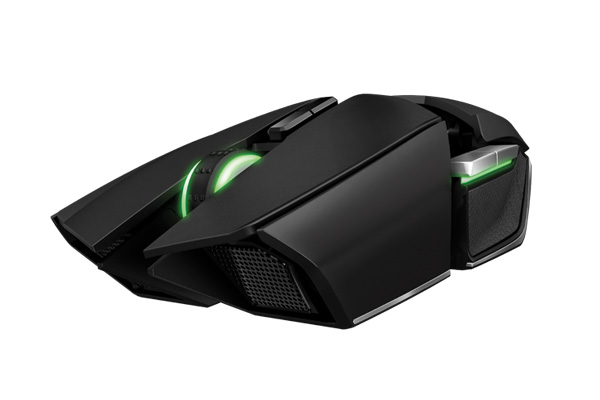
"World of Warcraft" proved to be the biggest stumbling block for the Ouroboros. Although the mouse performed well, and mapping our favorite skills to the extra buttons proved useful, the mouse's design makes it uncomfortable for long play sessions. Massively multiplayer online-game players may be better off with a dedicated MMO mouse such as the Logitech G600.
Verdict
Some gamers swear by the Ouroboros, and it's easy to see why. Few mice are more versatile or more accommodating to unusual hand conformations. Still, a mouse that you'll use for hours on end in intense play sessions has to be comfortable above all, and the Ouroboros fails to deliver on that count.
If you don't mind the way it feels, you can make the Ouroboros into a mouse that's uniquely yours, and use it to play any of your favorite games at a very high level. Otherwise, a mouse that fits your hand right by default is probably the better — and cheaper — option.
Specs
Laser Depth: 2 mm
DPI: 100 – 8,200
Size: 122-134 mm x 65 mm x 39 mm
Weight: 115 g
Connection: Wired/Wireless
Grip Type: Palm/Claw/Fingertip
Follow Marshall Honorof @marshallhonorof and on Google+. Follow us @tomsguide, on Facebook and on Google+.
Marshall Honorof is a senior editor for Tom's Guide, overseeing the site's coverage of gaming hardware and software. He comes from a science writing background, having studied paleomammalogy, biological anthropology, and the history of science and technology. After hours, you can find him practicing taekwondo or doing deep dives on classic sci-fi.
-
jacz This mouse has a big problem.Reply
It can get 6 minuts bifor it starts to work after reboot.
It is lafing.
It is the worst mouse i ever have
